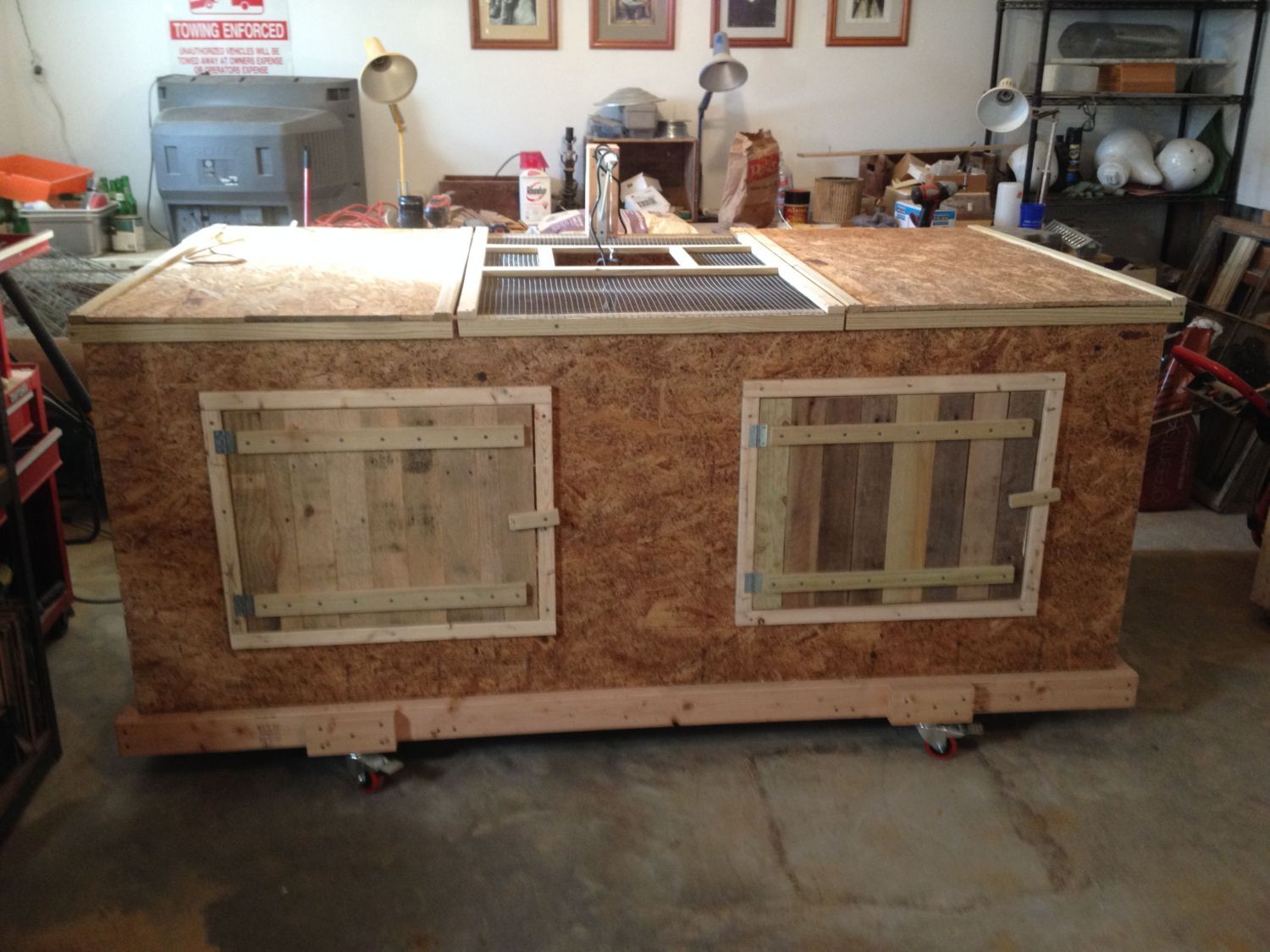I just recently built a new brooder for some Ameraucana chicks I will be getting in the next couple of weeks. I will be receiving 16 to 20 depending on hatch rate. As I plan to incubate myself in the future and will be incubating quail as well I went large on the brooder. 3.5 d x 7.6w x 3h. My thoughts were that I did not want to have to move the chicks as the weeks progressed but instead to build something that would last the whole 8 weeks for about 30 chicks.


The top is three removeable sections each with hardware wire. I added the plywood inserts to trap heat as the brooder is in the basement and night coldness during the winter could be an issue. As you can see from the above picture the light is hanging over a piece of 2x4 at roughly 3 inches in height. At this height of the light with a digital thermometer on top of the 2x4 I can get 95 degrees. Below is the height of the light.
My concern is that this distance only creates heat at this location and seems very close to the chicks and bedding. I realize that I only need to maintain this temp for a week as I will be lifting the lamp incrementally. I am also concerned with maintaining this temp at night when it gets colder as I tested this during the day. Would I be better served running two lights at the same time? As you can see below I could add another lamp to the other side of the brooder. My concern there is the wattage of two 250 w bulbs. The brooder is on casters so I could plug each into a seperate receptacle on another circuit. I didnt want to go to the $20 expense if I didnt have too. Please give me your thoughts and suggestions.


Thanks for your help.
The top is three removeable sections each with hardware wire. I added the plywood inserts to trap heat as the brooder is in the basement and night coldness during the winter could be an issue. As you can see from the above picture the light is hanging over a piece of 2x4 at roughly 3 inches in height. At this height of the light with a digital thermometer on top of the 2x4 I can get 95 degrees. Below is the height of the light.
My concern is that this distance only creates heat at this location and seems very close to the chicks and bedding. I realize that I only need to maintain this temp for a week as I will be lifting the lamp incrementally. I am also concerned with maintaining this temp at night when it gets colder as I tested this during the day. Would I be better served running two lights at the same time? As you can see below I could add another lamp to the other side of the brooder. My concern there is the wattage of two 250 w bulbs. The brooder is on casters so I could plug each into a seperate receptacle on another circuit. I didnt want to go to the $20 expense if I didnt have too. Please give me your thoughts and suggestions.
Thanks for your help.




